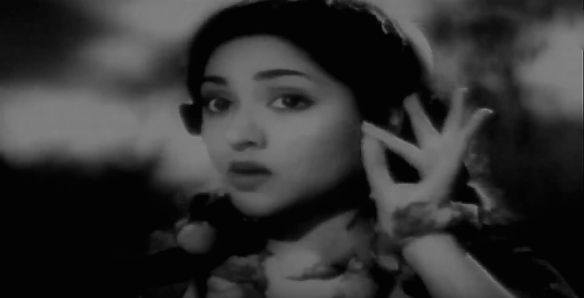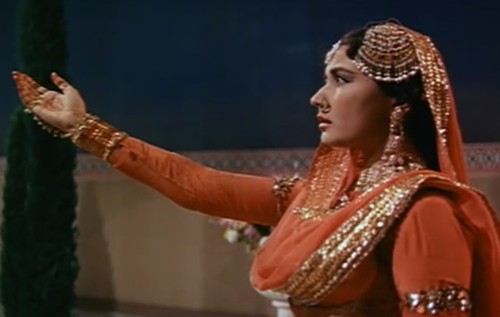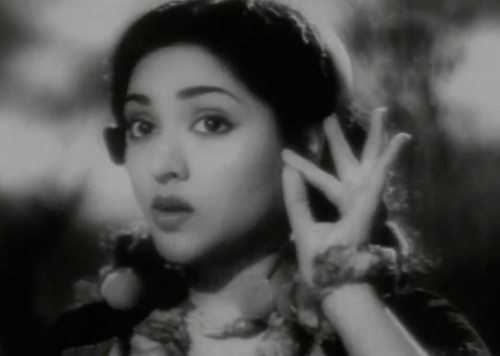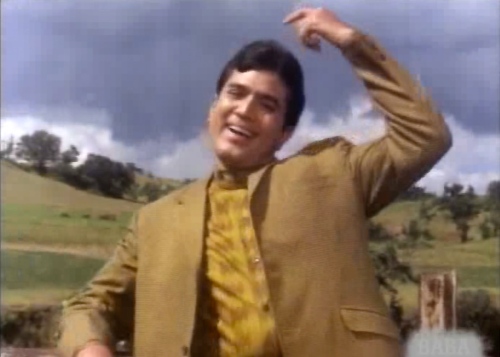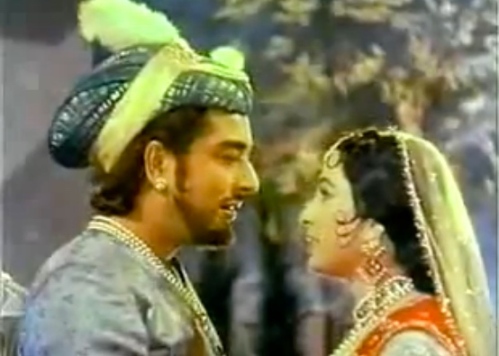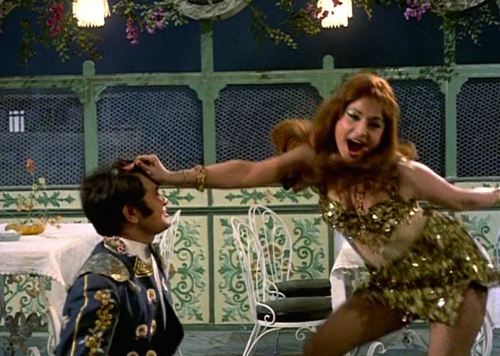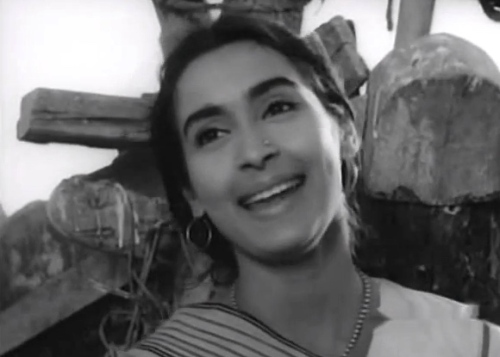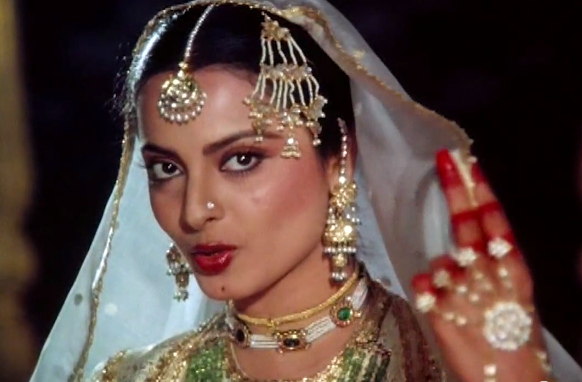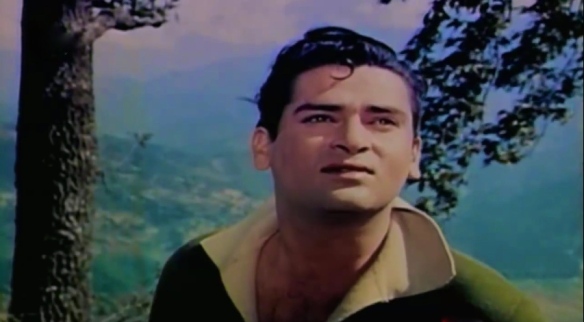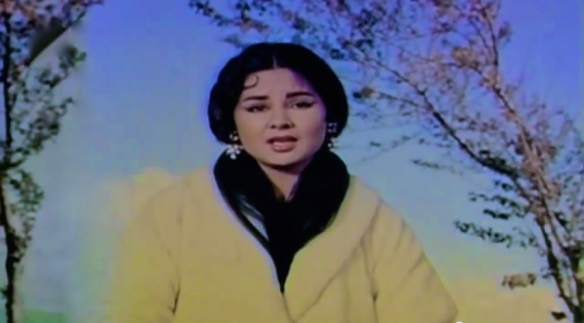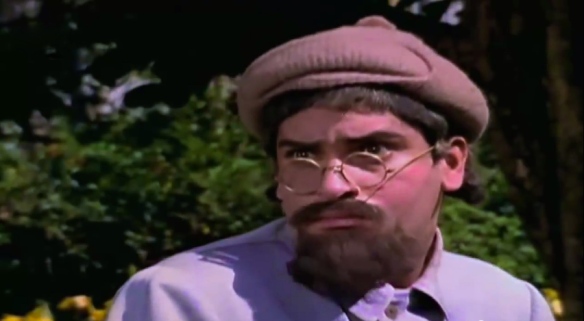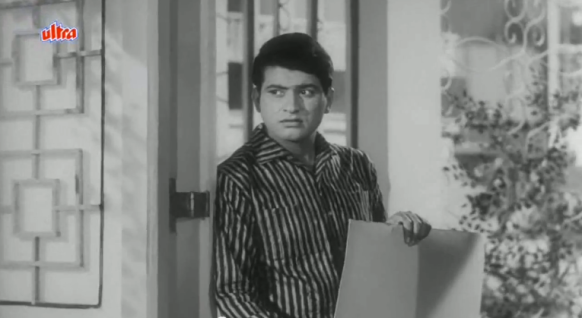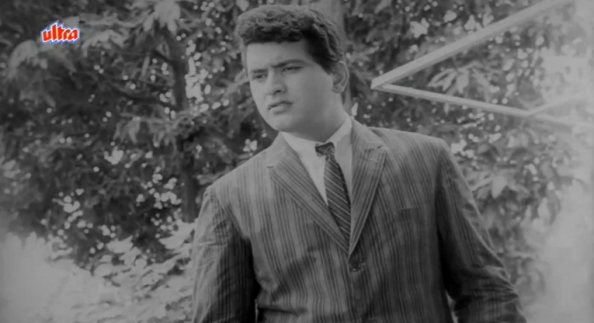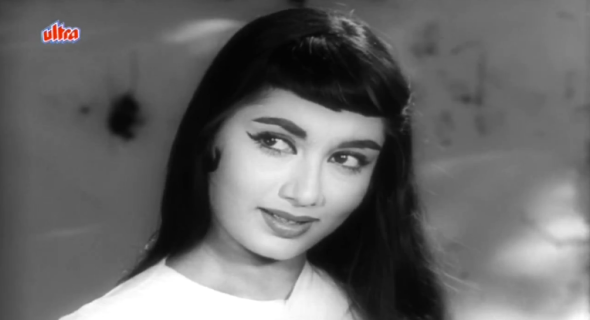
On June 12, 2016, the deadliest mass shooting in modern American history took place at Pulse nightclub in Orlando, Florida. This tragedy took the lives of 49 innocent victims and wounded at least 53 more. The majority of victims targeted in this violent massacre were LGBT people of color. We stand in solidarity with Orlando and pay tribute to the lives lost in this hate-fueled tragedy through the translation of a timeless song from Mughal-E-Azam (1960): “pyaar kiyaa to Darnaa kyaa?”

Madhubala’s portrayal of Anarkali in Mughal-E-Azam (1960) is widely considered to be her greatest work.
Mughal-E-Azam (1960), directed by K. Asif, narrates the story of forbidden love between Anarkali (played by Madhubala) and Salim (Dilip Kumar). Salim, prince of the Mughal empire, falls in love with Anarkali, a beautiful dancer in the royal court. Emperor Akbar, Salim’s father, is outraged by his son’s relationship with a lowly courtesan. The ensuing conflict between Akbar and Salim, with Anarkali caught in the middle, results in a war between father and son that culminates in a tragic conclusion on all sides.
Although the love story of Salim and Anarkali has been dramatized several times over the decades, this depiction has become immortalized as a masterpiece in the realm of Hindi cinema. This film is considered a crowning glory of the careers for several of the artists involved, especially actress Madhubala, playback singer Lata Mangeshkar, music director Naushad, and lyricist Shakeel Badayuni.
With poignant eloquence, “Pyar Kiya To Darna Kya?” embodies the spirit of bravery in love. Indeed, this song expresses a universal message that originates from the time of Mughal emperors yet still resonates today. It inspires us to fight for those we love, to have courage in the face of adversity, and to live our lives freely without fear.
In light of the recent tragedy, let it also be a reminder that love can be expressed in many different ways. Those who love differently from the norm should not be afraid of expressing themselves simply for being who they are. By promoting tolerance over hate, we must come together and take a stand against the persecution of the LGBT community in today’s society.
After all, we cannot forget that love is love.
-Mr. ’55

Madhubala brazenly defies societal norms in the royal court of Emperor Akbar in Mughal-E-Azam (1960)
Pyar Kiya To Darna Kya: Lyrics and English Translation
insaan kisii se duniyaa me.n ek baar muhabbat kartaa hai
An individual only falls in love once in this world.
is dard ko lekar jiitaa hai, is dard ko lekar martaa hai
He lives with this pain, and he dies with this pain.
pyaar kiyaa to Darnaa kyaa?
If I have loved, then why must I be afraid?
pyaar kiyaa koii chorii nahii.n kii
I have simply loved; I have committed no theft.
chhup chhup aahe.n bharnaa kyaa?
Then, why must I heave these sighs of pain in secrecy?
aaj kahe.nge dil kaa fasaanaa
Today, I will narrate the story of my heart,
jaan bhii le le chaahe zamaanaa
even if the world takes my life.
maut vahii jo duniyaa dekhe
If death is only accepted when witnessed by the world,
ghuT ghuT kar yuu.n marnaa kyaa?
then why must I die by suffocating alone?
unkii tamanna dil me.n rahegii
My desire for him will continue to grow in my heart.
shamma isii mahfil me.n rahegii
The flame will continue to burn in this gathering.
ishq me.n jiinaa, ishq me.n marnaa
After living in love and dying in love,
aur hame.n ab karnaa kyaa?
what else remains for me to do?
chhup na sakegaa ishq hamaraa
My love cannot be hidden,
chaaro.n taraf hai unkaa nazaaraa
it can be seen in all four directions.
pardaa nahii.n hai jab koii khudaa se,
If I do not wear a veil in front of God,
bando.n se pardaa karnaa kyaa?
why must my love remain veiled from society?
pyaar kiyaa to Darnaa kyaa?
If I have loved, then why must I be afraid?
Glossary
insaan: person, human; dard: pain; Darnaa: to fear; chorii: theft; aahe.n bharnaa: to heave sighs; fasanaa: story; zamaanaa: society, world; maut: death; ghuTnaa: to suffocate; tamanna: desire; shamma: flame; ishq: love; nazaaraa: sight; pardaa: veil: banda: person, human.




